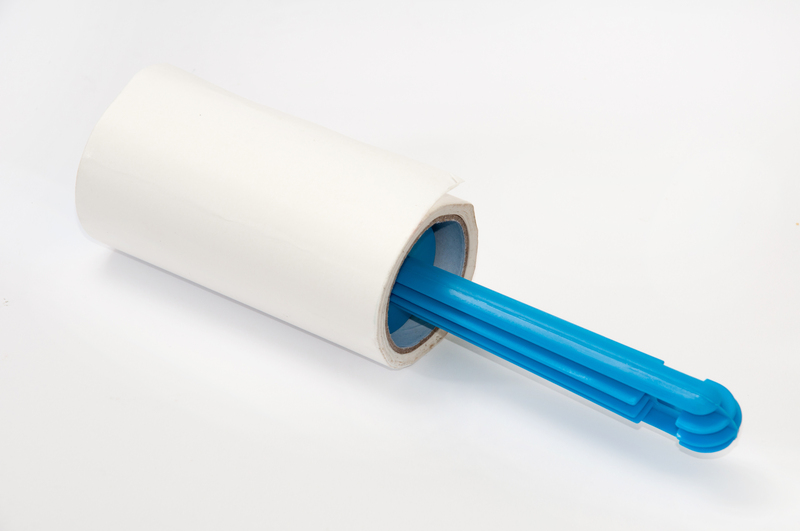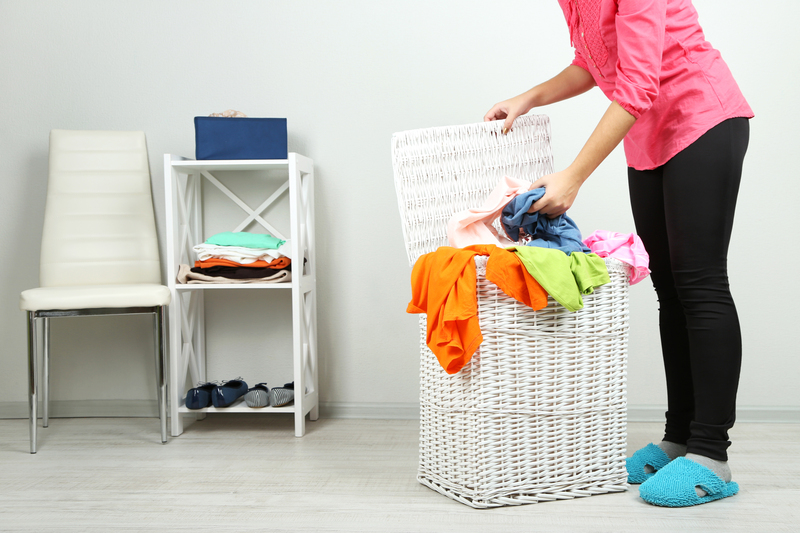Proven Strategies for Cleaning Burnt Residue Off Your Stovetop
Posted on 30/08/2025
Proven Strategies for Cleaning Burnt Residue Off Your Stovetop
Cooking at home is a rewarding experience, but accidents can happen--including those pesky spills and stuck-on messes that lead to burnt-on residue. Whether your stovetop is electric, gas, or glass, knowing how to effectively and safely remove burnt residue is a crucial part of kitchen maintenance. In this comprehensive guide, we explore proven strategies for cleaning burnt residue off your stovetop, ensuring you can restore its shine and functionality without causing damage.
Why Is Burnt Residue Cleaning Important?
Burnt residue, commonly known as burnt-on stains or stubborn grime, doesn't just make your stovetop look unsightly--it can also become a fire hazard, impede stove efficiency, and affect the flavor of your food. Regularly removing burnt residue from your stovetop preserves your appliance's longevity and ensures a hygienic cooking space.

Understanding Different Stovetop Surfaces
Before diving into cleaning techniques, it's important to identify the type of stovetop surface you have. This will help you tailor your cleaning approach for optimal results and avoid accidental damage.
- Gas stovetops: Feature removable grates and burner caps.
- Electric coil stovetops: Consist of exposed metal coils and drip pans.
- Glass-ceramic (smooth top) stoves: Require extra care to prevent scratches.
Always consult your manufacturer's guidelines when selecting cleaning methods for your particular stove type.
Essential Tools and Safe Cleaning Agents
Gathering the correct tools makes cleaning burnt-on residue more effective and safer for your stovetop. Here's what you'll need:
- Non-abrasive sponge or microfiber cloths
- Baking soda and white vinegar
- Plastic or silicone scraper (never metal on glass)
- Dish soap (preferably degreasing formula)
- Rubber gloves to protect your hands
- Old toothbrush for tight spots
- Paper towels or soft towels for drying
Step-By-Step Guide: Cleaning Burnt Residue Off Your Stovetop
Step 1: Allow the Stovetop to Cool Completely
Never start cleaning a hot stove. Wait until the entire surface is cool to prevent burns or accidental damage.
Step 2: Remove Surface Debris
Using a dry paper towel or soft brush, gently clear away loose crumbs and debris. This prevents further scratching during cleaning.
Step 3: Apply a Cleaning Solution
Mix a paste of baking soda and water (about 3 parts baking soda to 1 part water). Spread it generously over the burnt residue. For added cleaning power, spritz with white vinegar--the fizzing helps lift away stubborn grime.
Step 4: Let the Solution Sit
For maximum residue removal, allow the baking soda mixture to sit for 15-30 minutes. The longer it sits, the better it tackles caked-on messes.
Step 5: Gently Scrub
- Use a non-abrasive sponge or microfiber cloth to scrub the residue in a circular motion.
- For tough spots, a plastic or silicone scraper can help dislodge hardened stains.
- An old toothbrush is great for corners and control knobs.
Step 6: Wipe Away and Rinse
Use a damp cloth to wipe away the cleaning paste and loosened debris. Repeat the process if any stubborn burnt-on residue remains.
Step 7: Dry and Polish
Finally, use a clean, dry towel to buff the stove surface, leaving it looking as good as new!
Special Techniques for Different Stovetops
Gas Stovetops
- Remove burner grates and caps and soak them in hot, soapy water for at least 20 minutes.
- Scrub residue off with a non-abrasive pad or brush.
- Use a toothpick or small brush for clogged burner holes (do not use metal pins that could widen the holes).
- Ensure everything is completely dry before reassembling.
Electric Coil Stovetops
- Remove coils and drip pans before cleaning.
- Wipe coils carefully; don't submerge them in water.
- Soak drip pans in baking soda and vinegar solution for deeper cleaning.
Glass or Ceramic Stovetops
- Always use non-abrasive tools to avoid scratching the surface.
- For burnt-on spots, use a specialized glass stovetop scraper at a 45-degree angle, applying gentle pressure.
- Avoid ammonia-based cleaners, which can etch or discolor the glass.
Best Commercial Cleaners for Burnt Residue Stovetop Removal
If household ingredients aren't enough, consider a specialized commercial cleaner designed for stovetops. Some reputable options include:
- Bar Keepers Friend Cooktop Cleaner
- Weiman Glass Cook Top Cleaner & Polish
- Affresh Cooktop Cleaning Kit
These products are formulated to remove tough, burnt-on residue and are safe for most surfaces. Always follow the manufacturer's instructions.
Troubleshooting Persistent Burnt-On Residue
Sometimes, burnt residue removal requires more than one attempt. If stubborn grime remains, try the following methods:
- Steam Cleaning: Place a damp towel over the residue, and turn on low heat for a short time. The steam will help loosen the grime (only attempt this with hard surfaces--avoid on glass or if you're unsure).
- Lemon Juice: The acidic nature of lemon juice helps break down grease and burnt spots. Apply, let sit, scrub, and rinse.
- Razor Blade (for Glass Tops): Use only as a last resort and with extreme caution. Hold the blade flat against the surface and gently scrape without applying excessive force.
Preventing Burnt Residue Buildup
*Prevention is always better than cure.* By adopting a proactive approach to kitchen cleanliness, you can save yourself from the hassle of extensive residue removal. Here's how:
- Wipe spills immediately after cooking to prevent them from hardening.
- Use burner liners or drip pans for additional protection, especially with gas or electric coil stoves.
- Deep clean your stovetop weekly, even if stains aren't visible--this keeps buildup at bay.
- Avoid using cookware that overflows or splatters excessively. Lids and splatter guards can help reduce mess.
What To Avoid When Cleaning Burnt Residue Off Your Stovetop
- Never use steel wool or metal scouring pads on any stovetop, as these can deeply scratch or even pit the surface.
- Avoid overly acidic or ammonia-based cleaners on glass or ceramic tops, which can cause permanent damage.
- Don't use sharp metal tools for scraping unless specifically recommended for your surface type.
- Avoid soaking electrical components or using excessive water near controls and igniters.

Frequently Asked Questions About Cleaning Burnt Stovetop Residue
How can I remove heavy burnt-on stains from my stovetop?
For extremely tough stains, repeat the baking soda and vinegar method, allowing it to sit for up to an hour. For gas grates and burner caps, oven cleaners may be effective (if compatible with your materials). For glass tops, use a specialized scraper as a last resort.
Is it safe to use bleach or harsh chemicals on my stovetop?
It's generally not recommended to use bleach or harsh chemicals on stove surfaces, as they may discolor or corrode the finish. Safer alternatives like baking soda or commercial cooktop cleaners are more effective and surface-friendly.
How often should I deep-clean my stovetop?
Ideally, a deep clean should occur at least once a week, or whenever you notice significant buildup. Quick wipe-downs after each meal prevent most major messes.
Conclusion: A Sparkling Stovetop for Every Chef
With the right tools and proven strategies for cleaning burnt residue off your stovetop, you can maintain a spotless, efficient, and safe cooking space every day. Remember, patience and gentle cleaning are key to avoiding damage while getting rid of tough, burnt-on stains. Armed with these techniques, you'll be ready to tackle any cooking mess--so you can focus on what matters most: creating delicious meals for yourself and your loved ones.
Bookmark this guide and share these trusted methods for stovetop cleaning success! For more tips, visit our other home cleaning articles and keep your kitchen running at its best.




